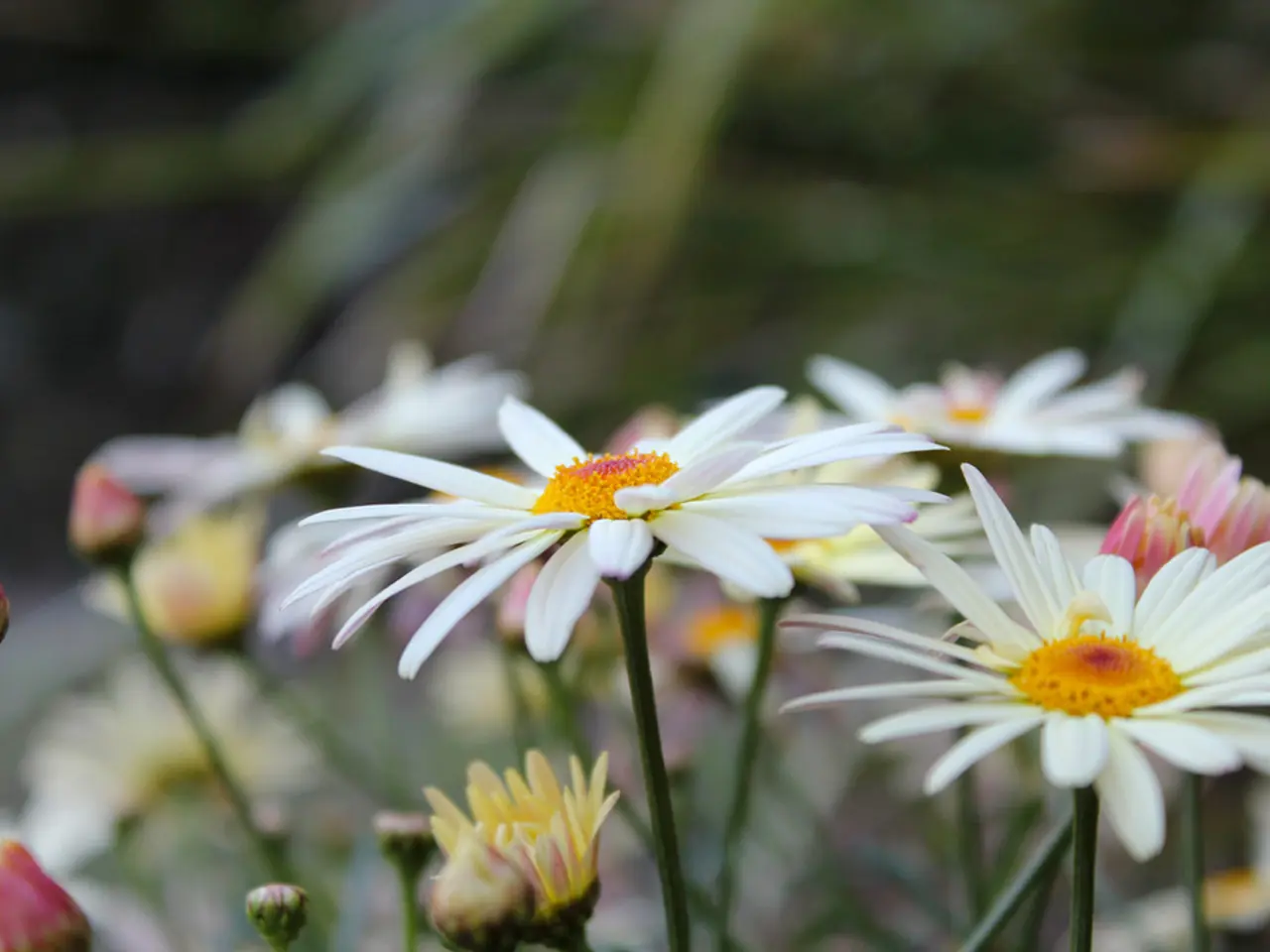Peonies Failing to Blossom? Exploring Six Typical Causes and Methods to Boost Flower Production
How to Encourage Blooming in Your Peony Plant
Peonies, known for their large, fragrant blooms that enliven the late spring garden, can sometimes struggle to produce these beautiful flowers. Here are some tips to help your peony thrive and bloom year after year.
Sunlight
Peonies require at least six hours of full sun daily. Too much shade, such as from nearby trees or shrubs, can reduce blooming. Make sure your peony is in a sunny spot to encourage maximum flower production.
Fertilizer
Using the right fertilizer is crucial for peonies. They benefit from a low-nitrogen fertilizer, such as a 5-10-5 formula, applied in spring when stems are about 5-8 cm high and again mid-season. Excess nitrogen can lead to lush foliage but fewer flowers. Additionally, peonies benefit from potassium for stem strength.
Recent Planting/Moving
Peonies often don't bloom the first spring after planting or transplanting as they establish roots. For faster root development and better bloom next year, plant bare root peonies in fall.
Planting Depth
Peonies planted too deep may fail to bloom. The eyes (buds) of the tubers should be no more than 2 inches below the soil surface. Excessive depth can hinder flowering. If your peony is planted too deep, gently remove some soil or mulch from around the base of the plant.
Cold Weather
Peonies need a certain amount of cold weather to set buds and flower. Early spring frost can cause a condition called bud blast, where buds turn brown and fail to open. Protecting plants in early spring or choosing hardy varieties can help reduce this.
Bud Blast
Bud blast is a disorder that causes flower buds to brown and drop before opening. It can be triggered by frost, excessive shade, or fungal diseases. Removing affected buds and improving site conditions can help prevent it.
In summary, ensure peonies are planted at the right depth in a sunny spot, use low-nitrogen fertilizer correctly, avoid transplanting just before flowering, and protect plants from late frost. Patience is also needed, as peonies typically mature and bloom well by their third spring. With the right care, your peony will reward you with years of beautiful blooms.
Home-and-garden enthusiasts will appreciate the rewarding impact of gardening with peonies, renowned for their captivating late-spring blooms. Given their home, optimal sun exposure and a spot away from shading trees or shrubs is crucial for proper blooming. Additionally, when tending to your home-and-garden, remember to choose a low-nitrogen fertilizer for your peony, as excess nitrogen fosters lush foliage but fewer flowers.




